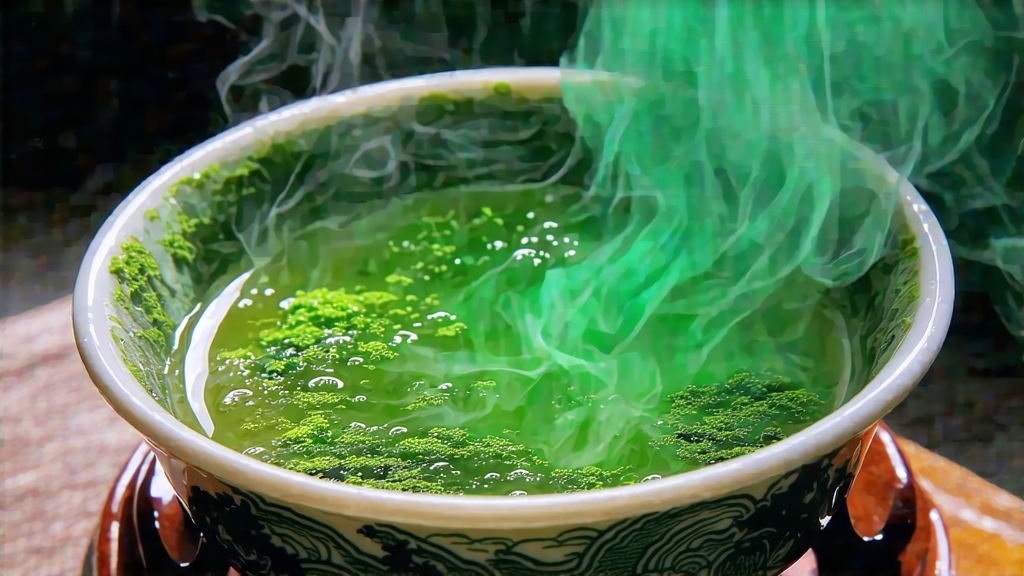
If green tea is the youthful face of Chinese tea and pu-erh its venerable elder, then Tie Guan Yin—literally “Iron Goddess of Mercy”—is the eternal thirty-year-old: old enough to carry centuries of lore, yet forever fresh in the cup. Originating in Anxi County, Fujian Province, this celebrated oolong has transcended its regional birthplace to become a global icon of Chinese tea artistry. To understand Tie Guan Yin is to witness the dialogue between soil and skill, between Qing-dynasty monks and 21st-century molecular gastronomists, between the ironclad pressure of a 30-pound cloth-wrapped ball and the feather-light touch of a gaiwan lid.
Historical roots
Local chronicles credit the discovery to Wei Yin, a devout farmer who lived during the Yongzheng reign (1723–1735). According to legend, Wei daily cleaned a neglected shrine to Guan Yin, the Bodhisattva of Compassion; in gratitude the goddess appeared in a dream, revealing a hidden tea tree whose leaves shimmered like iron yet exuded orchid fragrance. Wei transplanted the cutting behind his house, named the tea in her honor, and shared cuttings with neighbors. By the late 19th century Anxi merchants had carried Tie Guan Yin down the Min River to Xiamen’s treaty port, where foreign traders first tasted its “green-leaf red edge” miracle and shipped it to Southeast Asia, Taiwan, and eventually Europe. The cultivar’s formal botanical registration came only in 1965, but by then its mythos had already calcified into the bedrock of Chinese tea identity.
Cultivar spectrum
Tie Guan Yin is both a plant and a style. The original Hongxin (“red-heart”) cultivar bears small, serrated leaves with a reddish petiole and thrives at 600–1,000 m in Anxi’s granite-derived lateritic soils. A later Lüxin (“green-heart”) variant offers higher yield but lighter aroma, while hybrids such as Jinxuan and Maoxie are sometimes misleadingly sold under the same market name. Purists insist that only Hongxin grown within the 24 officially recognized villages—Xiping, Gande, Longjuan, etc.—deserves the title Zhengyan Tie Guan Yin, echoing the terroir politics of Burgundy. Spring tea (harvested around Grain Rain) commands the highest prices for its balance of floral top notes and creamy body; autumn tea offers a brighter, more perfumed cup; summer and winter flushes are rarely exported.
Crafting the iron
The transformation from leaf to liquor is a 24-hour choreography of wilting, stressing, oxidizing, and fixing that Fujianese masters call “making the green, taming the red.” Pluckers pick the standard three-leaf banjhi at dawn when dew still guards against brittleness. The leaves are spread 3 cm thick on bamboo trays to sun-wilt for 20–40 minutes depending on cloud cover, then moved indoors for 2–4 hours of resting oxidation. Here comes the signature act: yaoqing—“rocking the green.” Masters rhythmically toss the leaves in round bamboo sieves, bruising the edges against themselves so that enzymes meet air and the rim of each leaf blushes crimson while the center stays jade. When the room fills with the scent of ripe peaches and iron-rich soil, the oxidized edges are flash-heated in a 280 °C electric drum for 90 seconds to arrest oxidation at 30–40 %. Next, the leaves are wrapped in thick white cloth balls and rolled under mechanical or human-powered presses, gradually tightening into the tight pellet shape that resembles dragon eyes. This wrap-rolling repeats six to eight times with low-temperature drying intervals, compressing cell walls so that aromatic oils migrate to the surface. Finally, a 70 °C charcoal bake for 3–6 hours refines moisture to 3 % and stamps the tea with either a light floral “qing xiang” profile or a deeper “nong xiang” roasted character. The entire process consumes one ton of fresh leaf to yield 120 kg of finished tea, a sobering ratio that explains premium prices.
Brewing ritual
Western tea drinkers often overleaf Tie Guan Yin, seduced by its pellet density. The gongfu approach, however, treats each sphere as a compressed bouquet that unfurls in stages. Start with a 120 ml gaiwan,